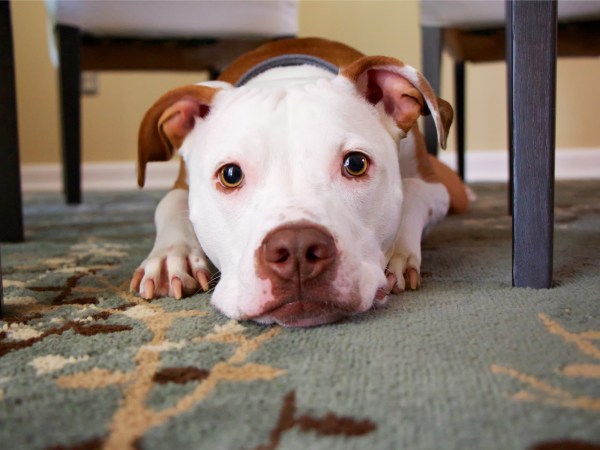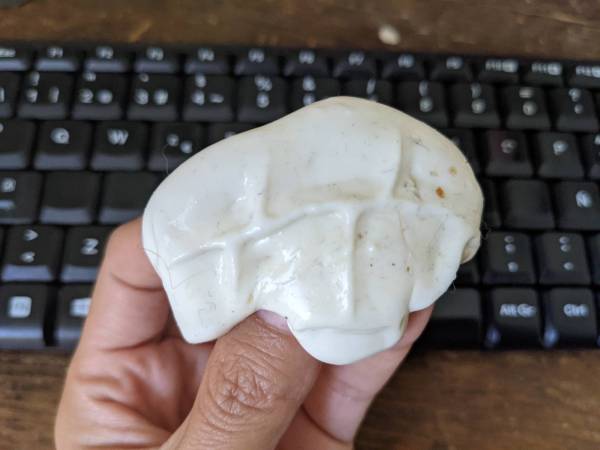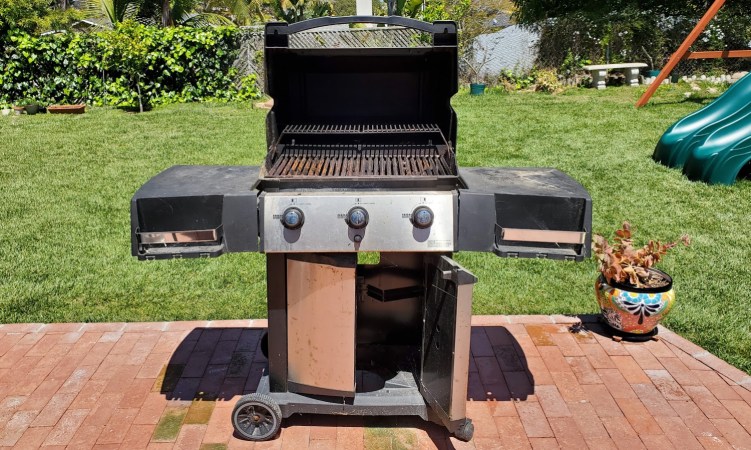

With veterinary offices and pet grooming services shut down, people have started to see their beloved poodles and doodles turn into tiny lint balls, while their cats become hairy, scarier versions of Freddy Krueger.
And although it may seem daunting, there are ways to make your pet’s life a little more comfortable during this pandemic. But while you’re bathing, trimming, and clipping your pet’s nails at home, understand that you’re not aiming to make your pooch look like a Westminster Kennel Club show finalist—here grooming is all about health, not style.
Your main goal right now is to keep your pet as happy as possible, at least until things open up again and you can put your best friend in the skilled hands of professionals. Then we can talk about cute.
The basics of brushing and bathing
Between dogs and cats, the latter are much more independent. Our feline friends are not only self-sufficient, they’re self-cleaning. The only grooming cats actually need is nail-clipping (more on that later) and a good, regular brushing if they have long hair. The rest is really up to them.
Dogs, though, are more reliant on their humans. Melina Metalios, a dog stylist at Camp Canine in New York City, says that in some cases, brushing may be all you need. “That in itself takes away a lot of the dirt, dander, and dust particles,” she says. “When you brush them, the bodily oils come up and back into the coat, so the best way to avoid washing a dog is to brush them constantly.”
Short-haired dogs—such as Labs, boxers, pugs, and Dalmatians—are easy to groom. You just run a curry brush over them, get the excess hair out, and it’s bath time. But if you have a double-coated dog like a Pomeranian; a curly-haired or drop-coated dog, or any pooch whose breed ends in “oodle,” you’ll have to get both a brush and a comb through their coat first.
“When you wash these breeds, any tangles in your dog’s coat will tighten up and become harder and harder to brush,” says Nancy Chinchar, dog stylist and owner of Downtown Doghouse, a pet salon and boutique in New York City.
If left unchecked, tangled hair becomes matted and mats turn into dreadlocks, by which point you’ll be causing skin problems for your dog. When you finally get to a professional groomer, they will not only have to shave off the matted coat, but you’ll probably have to make a subsequent trip to the vet to deal with your dog’s irritated skin.
Metalios also recommends you don’t skip combing double-coated or long-haired dogs. The brush will “open up” the top part of the coat, but the comb will help you work out any knots in the hair closer to the skin. And don’t just stick to the back—show some brushing love to their feet and legs as well. Once the brushing stops sounding like velcro, you’re good to go.
When your pooch is knot-free, reevaluate if they actually need a bath. If you think they still do, you can move on to the tub.
Watch out for the ears

First, check the water temperature—Chinchar recommends aiming for something just a little cooler than you’d be comfortable with.
If you are using a detachable shower head or a jar to rinse your dog, try to avoid getting water in their ears. Water alone is not necessarily harmful, but it could trigger an infection.
“Dogs’ ears are already warm, dark, and moist—a perfect environment for yeast to thrive,” explains Gabriela Canales, a veterinarian at West Chelsea Veterinary in New York City. “Water would only make things worse by helping yeast grow that much faster.”
Dogs with heavy ears—think beagles and basset hounds—are more at risk since their ears act as lids that make their ear canals even darker and warmer. The good news is that those cute floppy ears also protect their inner ear from water, so just make sure you don’t lift them and always aim your shower head straight down at your dog’s head.
If your dog has pointy ears, Canales recommends plugging them with cotton balls for protection. Just make sure the balls are big enough so they don’t slip into the ear canal, and replace them if they get wet.
Once the bath is over, you can clean your dog’s ears with a cleanser if you have one at home. If you don’t, Chinchar recommends dipping a cotton ball in a 50-50 apple cider vinegar and water solution and using it to clean each ear’s outer shell. This also works for cats whenever they’re unable to clean themselves.
The answer is (almost) always food
OK—the water is nice and its ears are protected, but your dog is not cooperating and just won’t get in the tub. This, as you might have assumed, is essential for dog bathing.
Maybe your pooch is terrified of water or you’re simply not used to washing them. But when it comes to convincing your dog to do anything, never underestimate the power of a treat.
When your dog is in the tub, try slathering peanut butter on a toy—Chinchar recommends a Kong or something plastic with a similar shape—and securing it in the corner where the tub meets the wall so your dog can lick it while you get them clean. If your setting is different, you may want to have someone on treat duty, making sure your dog always has something to distract them.
The shampoo controversy

At this point, there’s not much left to do but wash your dog. But if you’ve run out or never owned a bottle of shampoo at all, your first instinct may be to get your own shampoo and pamper your dog with “the good stuff.” Sorry, that’s the wrong instinct.
Dogs’ skin has a different pH balance than humans’, so products made for canines are manufactured with that and the specific oils on their skin in mind, Canales says. If you don’t have products made especially for dogs, she recommends using baby shampoo.
But this is a controversial matter among vets and stylists, and Chinchar says baby shampoo is not a solution because it’s just as hard on your dog’s skin.
If you absolutely have to wash your dog with something you have at home, you can use diluted dishwasher detergent, Metalios says—it’s what they use on really dirty dogs at Camp Canine. A warning, though: You’ll want to be very careful not to get it in your dog’s eyes. If you can, avoid their head altogether, she says.
Using human conditioner on dogs is equally controversial, so it’s best to just stay away from it, too. If you have some dog conditioner at home and think that using it will get you out of brushing your long- or curly-haired dog before the bath, think again. Chinchar and Metalios both say people with these kinds of dogs believe conditioner will loosen up those tangles, but it actually makes them worse. If your dog’s coat is matted, the product will soften the top layer of hair, but tighten everything underneath. The result will likely be a good ol’ shave.
When bath time is over, don’t worry about blow-drying a long- or curly-haired dog. Unless you’re exceptionally skilled and can handle a moving animal while operating a dryer and a brush at the same time, a towel will do fine. But don’t just rub your pet—squeeze them to get all the water out.
Haircuts and trimming
Approaching a cat or a dog with a sharp object when you’re not a professional is also a matter of controversy. The recommendation is simple—don’t do it. But that only applies to normal times and, right now, your dog or cat may be having trouble seeing beyond their nose. Worse, they may be keeping a gross souvenir on their butt from the last time they pooped. These scenarios are good for neither you nor them, so if either case applies to you, some trimming is definitely necessary.
Cats are complicated, though. They’re self-cleaning animals, so if you’re having trouble with their poop or pee getting all over their coats, it’s most likely because they are old or, for some reason, can no longer take care of themselves. Even then, Canales recommends you do not try to trim, cut, or shave your cat yourself. “Even with clippers you can cut the skin off,” she warns.
“If you make a mistake with a cat, it means stitches,” Chinchar says. “Their skin is so thin that if you catch it, it just rips.”
Dogs are less delicate, but that doesn’t mean you can just go in with scissors and cut. Don’t try your luck trying to replicate one of those fancy haircuts on Instagram—do yourself (and your dog) a favor and do only what is necessary.
Bangs
There are few things more uncomfortable than growing out your bangs, and it’s possible your pooch may feel the same way. If their hair is poking their eyes, a little trimming will go a long way.
First of all, stay calm. Dogs can definitely tell when you’re nervous and they’ll get nervous too. That means they’ll move a lot more, increasing the chance that you’ll poke your dog in the eye with your scissors.
Choose the best scissors you have so you can do the job as quickly as possible. If you have a pair with round tips, even better. Comb all the hair on the top of your dog’s head forward and hold the scissors parallel to your dog’s face, shears facing down. Think about Uma Thurman and John Travolta dancing in Pulp Fiction, doing that thing with their fingers in front of their eyes—that’s what you want. Trim the hair straight across, just as if it were your own bangs.
If your dog has long facial hair between their eyes, give it a trim if you feel comfortable. Just try not to get too close, Metalios says.
Butt hair
You may laugh, but that likely means you’ve never dealt with your dog’s poopy butt before. Without constant grooming, some dogs’ coats grow and grow until they’re an obstacle even for their own poop. Again, to solve this, you really don’t want to attempt anything super stylish.
“There’s an anal gland sac back there and you don’t want to mess around with it. Just trim what you need to,” says Chinchar.
Comb the hair toward you and, using your index and middle finger, settle on the length you want to cut. With the point of your scissors aimed down, cut straight down your dog’s leg. This will prevent you from poking them if they move.
Even before you pick up your scissors, your dog may start to squirm. There’s a simple reason for that: Some dogs just don’t like it when you lift up their tail. If that’s the case, moving their tail slightly up and over to the side will be enough.
Kitty doggy mani pedi

Cutting and trimming your dog’s or cat’s nails is one of the things pet owners most commonly outsource. And we get it—we all know how painful and annoying it can be to have your nails cut too short, so it’s kind of unnerving doing it to someone else. Especially if that someone is your precious pet.
If it makes you feel any better, no one actually likes doing this—not even vets or stylists, both Canales and Metalios say. But when it’s time to cut those claws, just pick up your clippers and gather some confidence. Even if your dog is complacent, you won’t do a good job if you’re nervous or afraid.
And it’s important that you do. Cutting your pet’s nails is a matter of health. At best, a dog’s overgrown nails are uncomfortable, and at worst, they can curl around and grow into their pads. Cats won’t suffer if you don’t clip their nails, but you probably will—it only takes a little bit of play time to get your hands and arms scratched up by a cat’s sharp claws.
For cats, clipping the very tip of the nail is more than enough. To start, pick up their foot and hold it close to their body. Press the central pad and their nails will pop right out. When that happens, you’ll see a red vein (or quick) going from their toes and down almost to the tip. Start cutting, making sure to avoid it. Canales notes that cats often have curved nails and she usually clips where the bottom part of that curve begins to flatten out.
If your cat is not cooperating, you can try turning them into a burrito by wrapping a towel around their body to keep them in place. If that’s too much for you, ask somebody to hold your cat while you go at it. If they keep squirming around and you don’t feel confident about what you’re doing, don’t insist—call your vet and ask for professional help.
Dogs are a little more complicated. “Most of them have had the quick cut before, so once a nail trim starts, they’re super scared,” Canales says. The reason this mistake happens so often with dogs is that a lot of them have dark nails, so you can’t really see the quick before you cut.
But before you decide to try clipping at all, make sure your dog actually needs their nails trimmed. Put them on a table and see if their nails touch the surface—if they don’t, leave them alone. If they do, sit facing your dog and lift their paw. Most people try this while sitting beside them, but dogs’ legs just don’t bend naturally to the sides, so doing so will be uncomfortable for them and they’ll probably move a lot.
If you have somebody who can help you, have them distract the dog with a toy slathered in peanut butter, and start to clip. If your dog has white nails, you’ll probably be able to see the red end of the quick—avoid it and just cut the very tip of the nail.
Metalios says that even if you do your best to avoid the quick, it’s common for the nail to bleed. If that happens, don’t beat yourself up. Your dog will be a little uncomfortable, but they’re not in deep pain or anything. You’ll definitely think otherwise, though, because quicks bleed a lot. Like, a lot.
At Camp Canine, Metalios uses Kwik Stop, which comes in powder or gel form and works as an antiseptic, pain reliever, and blood stopper. If you don’t have any at home, you can use some flour. Just pour some on a plate and dip the dog’s nail in it. It won’t help with discomfort, but it’ll help with what will certainly look like a crime scene.















